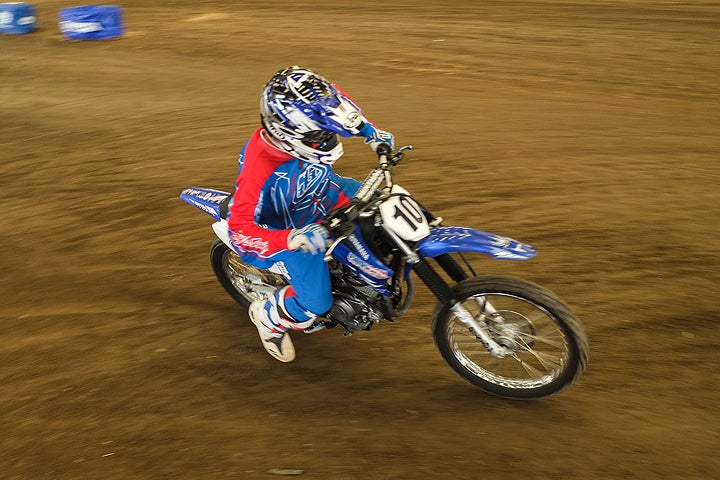
There probably aren’t too many DirtBikes.com readers who remember, Name That Tune, but the underlying theme of Danny Walker’s American Supercamp is kind of like the old television game show.
In Name That Tune, the object was for players to be able to name a song in the least possible amount of notes after being provided verbal clues as to its title. Contestants would then challenge each other by stating how few notes they needed to “name that tune.”
Where Walker’s dirt track-inspired teaching curriculum draws a parallel to Name That Tune is that any student, and we do mean any student, can learn to slide a motorcycle with confidence in just four notes—or moves—no more, no less. It’s a process that has created better motorcycle riders and racers, some who have gone on to become professional racing champions, during the 20 years of American Supercamp schools.
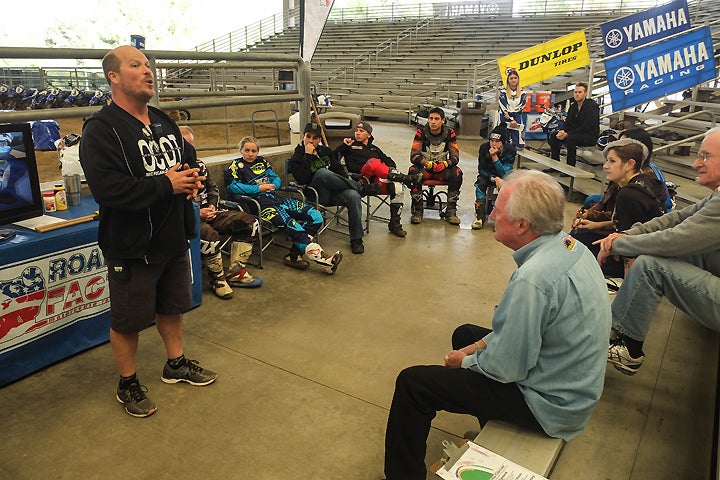
That’s how long Walker, now 53 and a former AMA Superbike and 250cc GP road racer, has been showing them how to better control their machines whenever a loss of traction is encountered, be it on the street, in the dirt, or on purpose while competing on either surface. Some days, Walker wonders why he still does it, but then there are other days, when he crosses paths with students that he knows will one day be top stars in professional racing.
“Today was one of those,” Walker told me during a conversation we had just a few days after my visit to American Supercamp. “I was watching this little kid, Travis Horn. This badass 9-year-old was hard to get around on his little 110. He was backing that thing in so hard, running it off in there as hard as Chris Carr, Jared Mees or Bryan Smith, and you could see the gleam in his eye. Right then I thought, ‘I need to get this kid’s autograph because he is going to be somebody.’ It reminded me of when I saw Jared during his first time at Supercamp; he was so excited just to be able to drive a car around and wheel pack the track before he had a driver’s license. And I remember being 10 or 11 years old and wanting to be a big-time racer and wishing that someone had something like this to teach me when I was that age. That’s what makes it worthwhile. It’s an awesome experience to see people ‘get it.’”
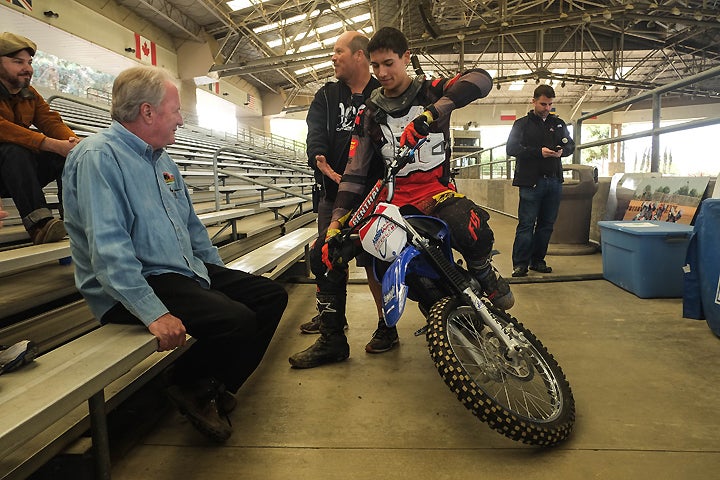
My all-too-brief day with American Supercamp took place when the nation-trotting school made its way to the Industry Hills Expo Center, home of the awesome Industry Hills Speedway track, for a week’s worth of intensive training sessions for riders of all ages and skills. Our one-day session was primarily for local media, which brought out a diversity of students with experience ranging from considerable to nearly zero. It doesn’t matter, says Walker. With very few exceptions over the course of his teaching career, his methods, designed in conjunction with world-class flat-track and road-race competitors, has improved the riding technique of thousands of students who have spun millions of laps at American Supercamp.
American Supercamp classes are conducted aboard Yamaha TT-R125s provided by the school and equipped with dirt track-style rear tires designed to give students the proper feel when sliding on dirt. Now, you might think that there is little that can be learned about the art of American Flat Track-style sliding on a 10-horsepower playbike, but the little Yamahas are more than up to the task, and the techniques that can be learned with 10 horsepower at your disposal can be just as easily applied when you have a 100-horsepower motorcycle between your legs. And it doesn’t matter whether you are a seasoned professional or a first-time dirt rider. An American Supercamp class will make you more proficient.
“When we first started this 20 years ago, the business model was really to make racers better racers,” Walker said. “We just never realized how much of an impact we could have with your average street rider or dirt rider and how those same flat track skills have even saved lives on the street.”
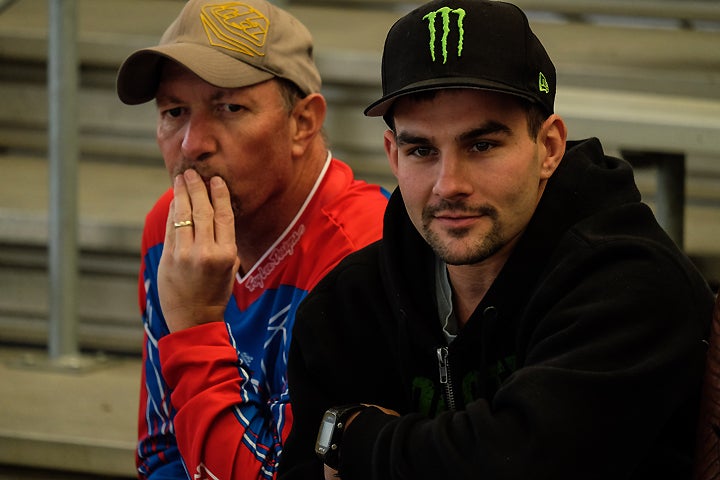
For just about every American Supercamp session, Walker assembles a cast of motorcycle racing’s elite to serve as tutors, and my particular class was all-star quality, including seven-time AMA Grand National Champion Chris Carr, current AMA Grand National Champion Bryan Smith and the man he pipped for the title on the last lap of the last race of 2016, three-time AMA Grand National Champion Jared Mees. For even more star power, Walker also had female flat track superstar Shayna Texter on hand to demonstrate for students just how it’s done.
The critical four notes that are needed to learn how to improve motorcycle control the American Supercamp are as follows:
1. Drive Into Corner
2. Reduce Speed
3. Change Direction
4. Start Straightaway
That all sounds simple enough, but these basics steps require a lot of coaching on the subtle techniques that connect the dots. They include body position, line selection, lean angle and throttle position-to-lean angle. Of these, body position, including the head as well as the torso and legs, is the one that Walker stresses the most. Fail to get your body position right and the rest of the exercise becomes exponentially more difficult.
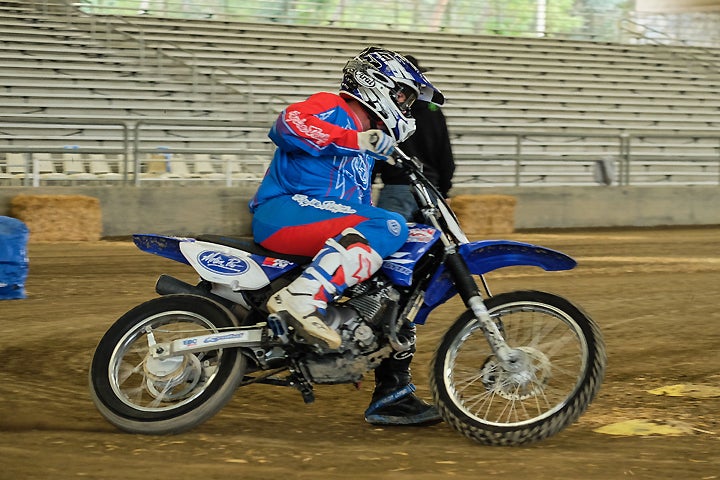
Getting in the best position to attack the corner involves making sure that your body stays perpendicular to the ground at all times. In other words, the bike leans but you don’t. This is done for several reasons including but not limited to the facts that it maintains the ideal center of gravity for better control; it helps to keep the rider’s head from leaning, which allows for a better field of vision; it places the rider’s shoulders square and helps to keep the hands and arms in the proper attack position for the most effective cornering.
When entering a corner, Walker stresses that you drive into it on the throttle, holding the throttle on longer than you might be comfortable with before smoothly closing it. To reduce speed, you then gently squeeze the rear brake while driving the bike downward with your right leg against the tank and rotating your left hip outward, knee bent, to contact the ground with the outside edge of your boot sole as the rear of the motorcycle begins to slide. From the waist up, your shoulders should remain square, but you should actually “slouch” into the seat while keeping your right elbow high and grip the throttle as if you would when turning a door knob. This type of grip allows you to modulate the throttle as necessary to maintain the proper lean angle.
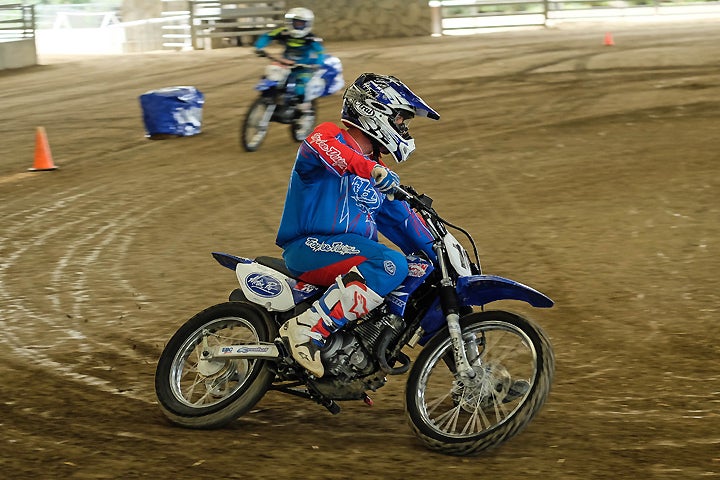
Maintaining the proper center of gravity with the bike leaned over means placing your butt crack on the outer edge of the seat—not the most comfortable position but definitely the most effective—while also allowing your inside arm to more or less drop straight down while holding the left handlebar. All the while, you keep your eyes up, looking as far down the track as possible. Welcome to the world of the flat track-style slide.
It all feels and looks cool, but the object is to also get off the corner as quickly and efficiently as possible. Smoothness is the key, starting with a gentle release of the rear brake. Just as hacking the rear brake on entry can make the slide feel uncontrolled, an abrupt release can unload the rear suspension and cause the bike to push wide off the corner. The idea here is to get the wheels in line as soon as possible and roll the motorcycle onto the center of the rear tire while applying the throttle and subtly shifting your weight rearward for maximum forward drive.
With a little practice, you soon find yourself able to not only get in and out of a corner with surprising speed, you can even do it with one hand on the gas cap, something that Walker presses students to try during one of the multiple riding sessions offered at each American Supercamp class. And the same technique (less the one-handed part) applies when making right-handed corners. The only difference is that you will find yourself keeping your right foot off the ground longer while modulating the rear brake. Here again, all it takes is a little time before you’re doing it without even thinking about it.
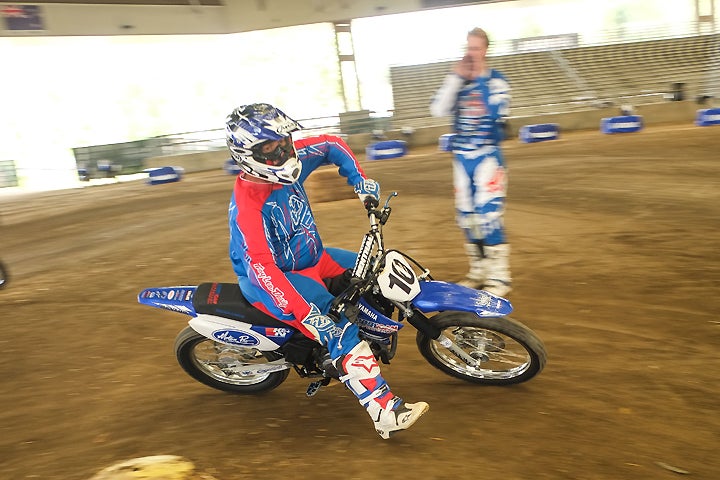
Then, once you think you’ve got the drills down pat, Walker changes it up even more by turning the track into a quagmire, aka “the mud drill.”
“We always do the mud drill,” Walker laughs. “It highlights every single little head bob, abrupt throttle input or brake input. Every mistake you are making is magnified dramatically.”
The sure-footed style you enjoyed through the early sessions suddenly goes out the window as the bike feels wobbly and loose on the now-icy surface, but there’s simply no better way to learn balance and throttle control. After some more time, and maybe a spill or two, you’ll begin to feel just as confident on a loose or slick surface as you did when there was more grip, and once the track dries and the grip returns, you might just amaze yourself as your corner speed goes to a whole new level.
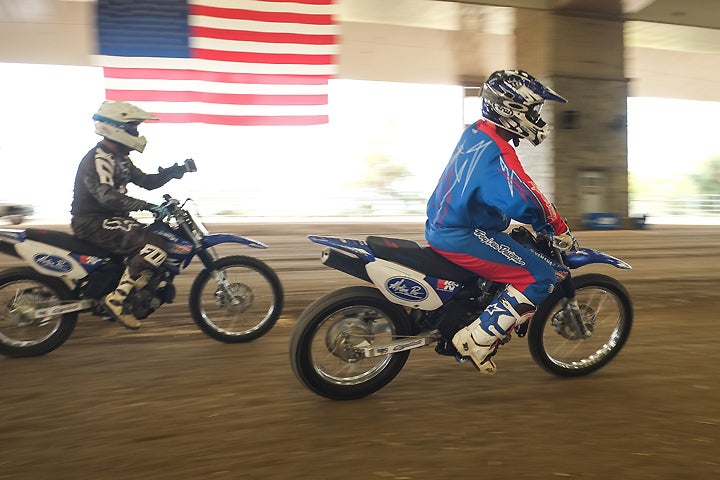
Such progress is what makes American Supercamp worthwhile. This was my third American Supercamp class, and I have considerable flat track experience, having raced both flat track and speedway in my younger years (it felt pretty good when Smith, whose credentials are as good as they come, complimented my riding). Still, my technique was far from perfect, a point driven home as Carr pulled me off the track and scolded me for the mistakes that I was making. Making progress is fun, but for me it was more fun to watch rank novices like my Motorcycle.com brother, Evans Brasfield, awakened to the idea of not only how much fun flat track-riding techniques can be but also how much they apply to pavement riding.
American Supercamp also teaches line selection as a major component of riding, and Walker is a firm believer in the idea of late-apexing—giving yourself a wide corner entry and a tight exit, which forces the rider to spend less time leaned over and more time on the center of the tire where traction is most abundant.
It’s all worth the $650 that American Supercamp collects for a full class (discounts are also available for early registration). For that, you get great instruction from people who have applied these theories with tremendous success, the use of a motorcycle and all the necessary safety gear, food, beverages and a whole lot of fun.
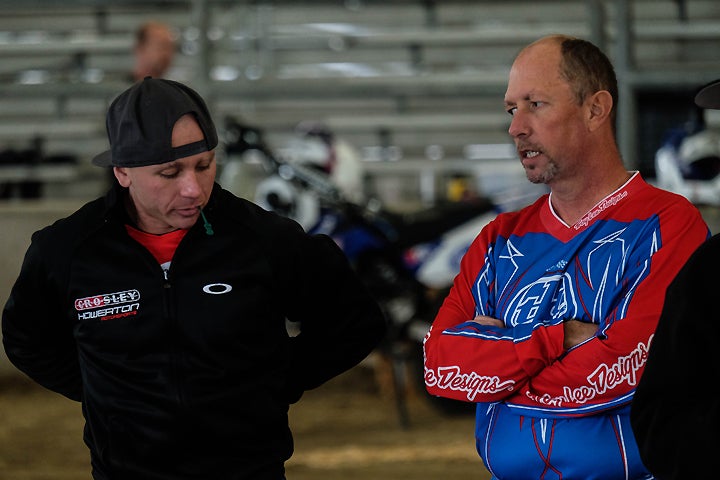
“We’ve had some great people help us develop the curriculum over the years, and we’ve modified what we teach as we’ve found what works,” Walker said. “We’ve always encouraged students to tell us what works and what doesn’t work for them. I also have to give Chris Carr a lot of credit. He is one of the most passionate people when it comes to teaching you how to be a better rider. He gives it everything he has.”
There are a lot of schools out there, but American Supercamp is one of the few that has developed a legacy for producing champions such as flat track champions Mees, Jake Johnson and road racing champions such as Josh Hayes and J.D. Beach. Walker has plenty of reason to be proud of what American Supercamp has accomplished over its two decades of operation, although he refuses to take most of the credit for it.
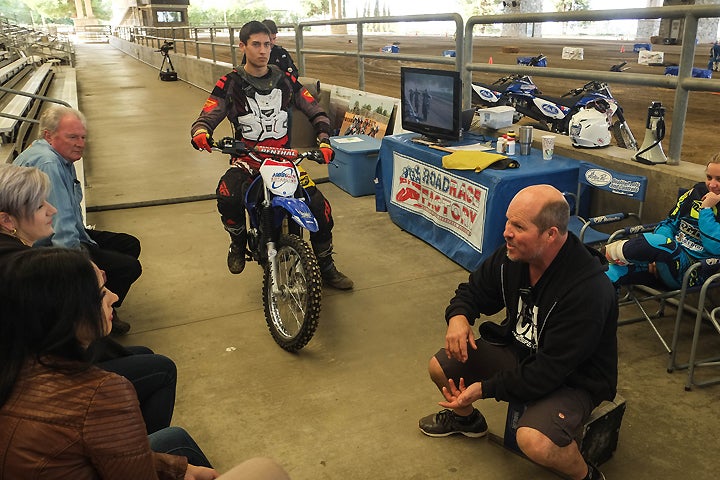
“It’s not about me,” Walker said. “I didn’t come up with this stuff. I’m just fortunate to have been able to get the right people together to develop a program where people can come and learn some really important riding skills while having a lot of fun.”
For more information on American Supercamp, visit the school’s website at www.americansupercamp.com.
 Your Privacy Choices
Your Privacy Choices